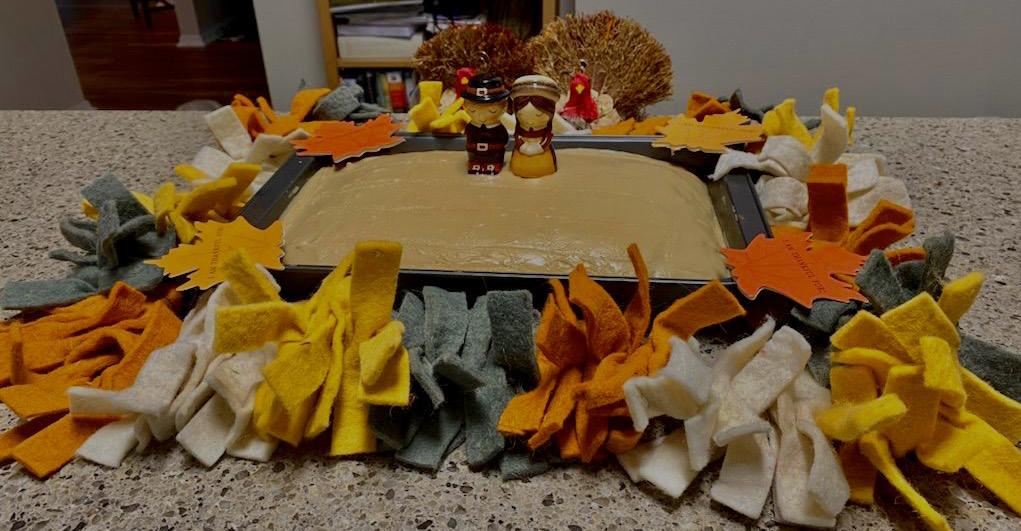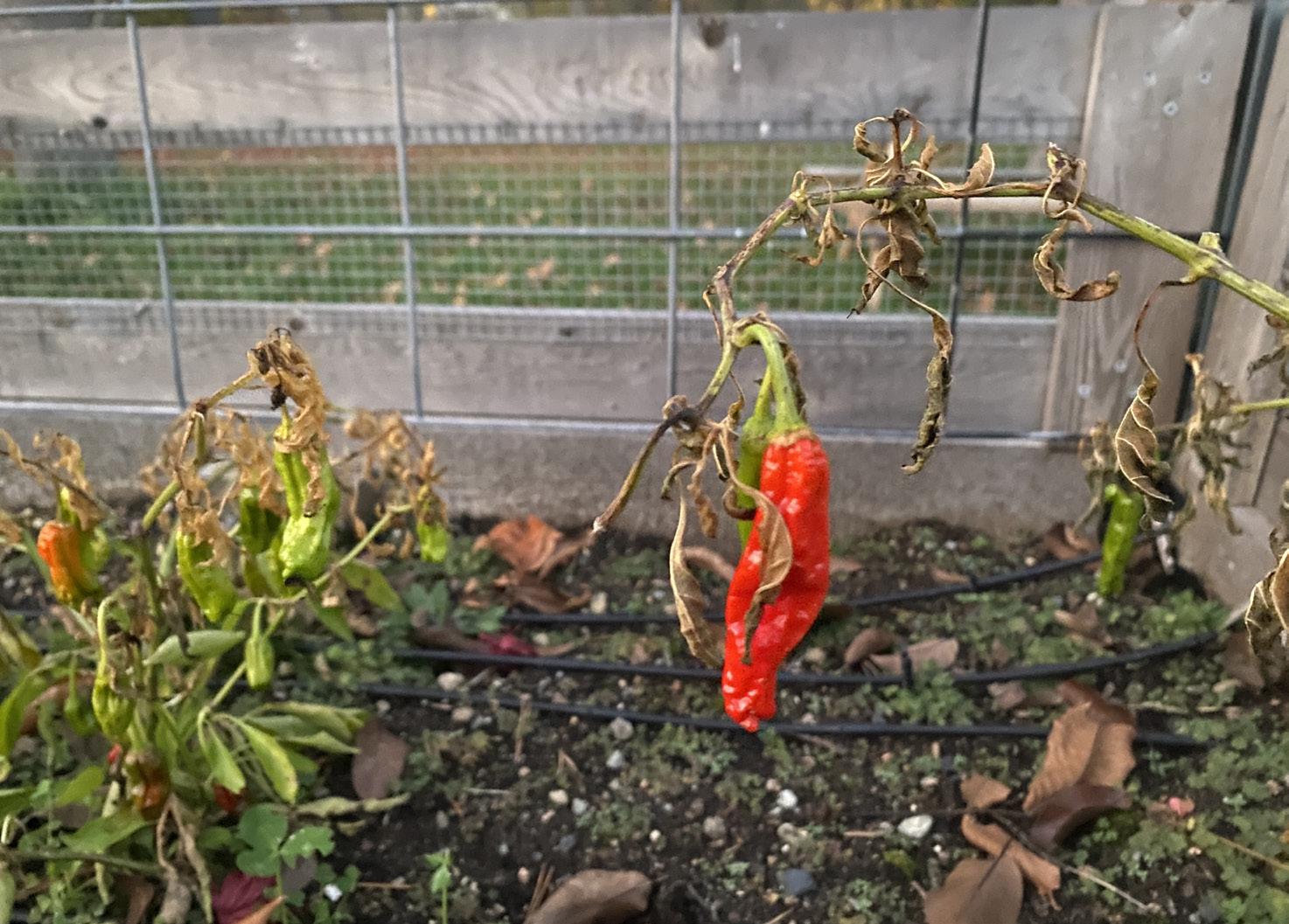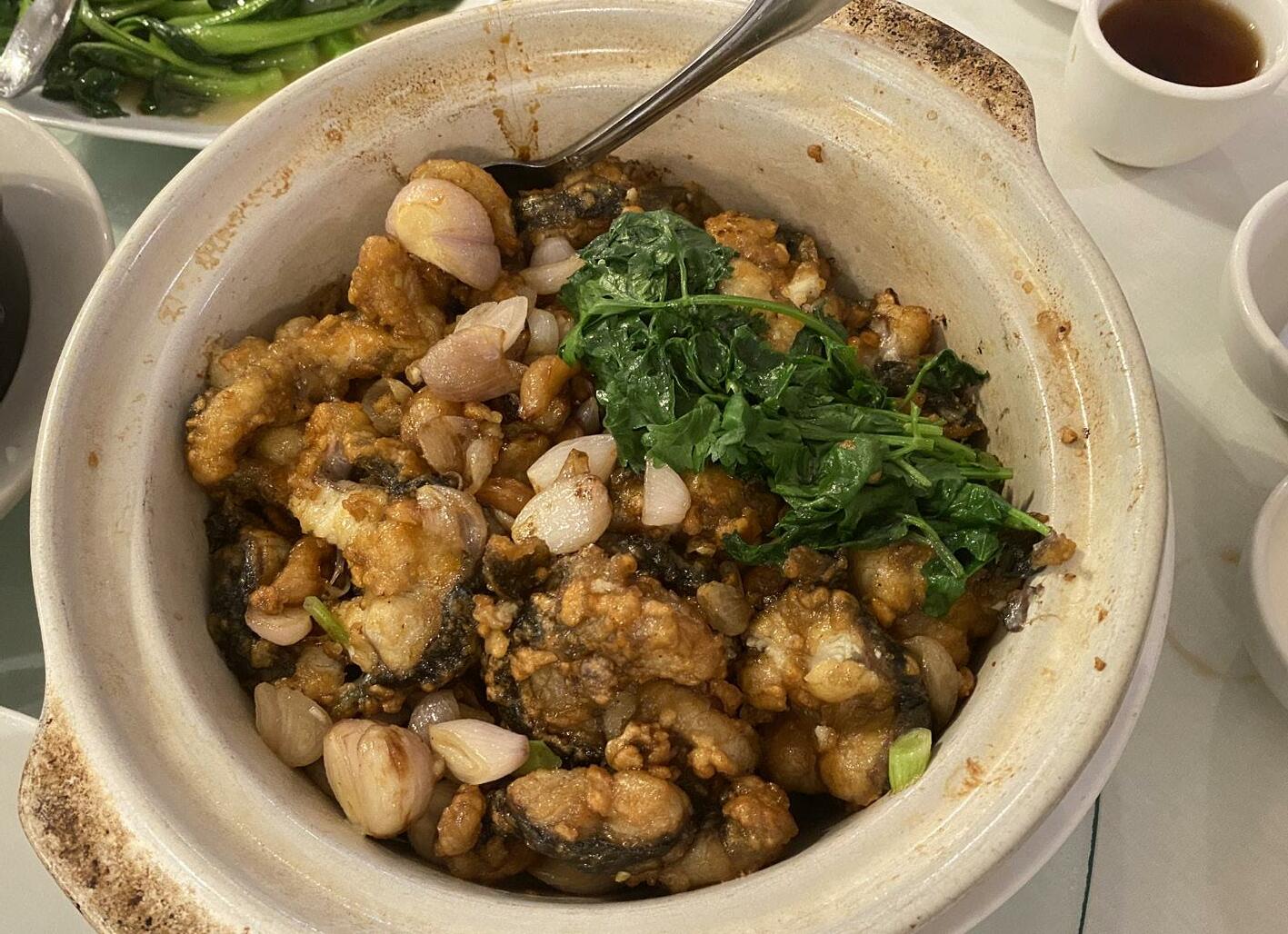PA FOOD SOCIETY

22 spice & harvest






22 spice & harvest





















And...we’re back! Because of everyone’s interest and keen support, we’ve been yet again lucky enough to have enough material for a second volume. We’re also excited to be working with a bunch of wonderfully talented creatives and staff who have been newly recruited this fall. Yet perhaps in the spirit of Thanksgiving, we’d like to center this “editor-in-chief’s note” around extending our gratitdue to a couple of special people.
PA Food Society is made possible in part by a grant from the Abbot Academy Fund, continuing Abbot’s tradition of boldness, innovation, and caring. Our club is extremely appreciative of the opportunities that this generous fund will allow us to accomplish—so please stay tuned as we plan for collaborations, festivals, and open kitchens in the future! Secondly, nothing we have here could have been completed without the help of our dear faculty advisor Dr. Martinez; everyone at PA Food Society here is thankful for the care that she has extended to us.
—Jackie Li, Editor-in-Chief
Twice a year, I would travel to Denver to see my grandparents on my father’s side, both of whom were originally from China. Every time I saw them, my grandpa would make 蔥 蛋翠軟薄餅 (pinyin: cong dan cui ran bo bing)—egg scallion pancakes—for the whole family. He always ensured that everyone got at least three pancakes before they left the table. Since this dish comes from my ancestors China’s small city of 宁波 (pinyin: ningbo), despite never going there, every time I eat 蔥蛋翠軟薄餅 I feel connected to my ancestry and culture.
While the dish may at first look like a typical scrambled egg, the taste and texture of it are completely different. While a scrambled egg is soft, 蔥蛋翠 軟薄餅 is crunchy on the outsides, but soft on the inside. The scallions give the dish a sharp aromatic flavor of onions but are slightly milder. This is what made my Sunday mornings so special—being able to smell the warm fragrance of a 蔥蛋翠軟薄餅 currently cooking. Additionally, the few drops of rice wine give the dish a mixed aroma and taste.
BY COREY SHENHaving a slightly vinegary and complex flavor, rice wine is a very common ingredient in Chinese cooking.
When I asked my grandpa for the recipe, he was ecstatic that I was interested in the dish and wanted to share it with others.
Even now, my grandpa still makes this dish for us, and he has passed it down through the generations. What was once the recipe of my grandpa was bestowed upon my father and is now entrusted to my siblings and me. Although we may not be able to perfect it the same way our grandpa does, my siblings and I always carefully observe how he makes his pancakes, so that one day, we can make them for our children too. 蔥蛋翠軟薄餅 has become a dish for everyone in the family to make for one another on special days.
oconut, pineapple, papaya, and cinnamon are the harmonious flavors of my household. Whether from a cousin’s Mason Jar or our own Vitamix blender, they are always a delight. But, beyond the flavors of the smoothie, I cherish more the person behind it.
Growing up five years apart from my older sister, it is not an understatement to say that we have had our fair share of disputes, and usually over trivial occurrences as well. However, those petty instances escalate so much that sometimes I wished I didn’t have a sister at all.
In spite of all that, when I hear the words, “Leilani, I just made my special fruit smoothie. Try it. I know you will love it,” it seems like all of our differences fade away. Regardless of whether I was in the mood for the heaviness of coconut cream or the tang of cinnamon, my sister took the time and effort to create something that she was proud of, just for me. Filling a glass, she would carefully wipe the rims as if she was serving her creation to an esteemed judge, and watch with a smile as I sipped her masterpiece. I will forever be in the mood for her creamy special fruit smoothie.
The coconut cream provides a distinctive nutty flavor akin to an almond alongside a candied touch of sweetness. Not only is this a flavor that can be used to brighten up savory dishes, but it
can also be used in baked goods and smoothies such as this one. Coconut cream’s versatility is astounding, the way it never fails to deliver a new taste and texture with every use, leaving you forever craving more. My sister’s versatility is astounding, the way she is always open to my point of view, the way she always supports me no matter what she may be feeling that day.
Yet, unlike the coconut cream, she never sugarcoats her advice to me just because I am younger. Instead, her words are more similar to the zesty, lip-puckering kick the pineapple juice gives to the smoothie. Crowning each sip of decadent coconut and vibrant pineapple is a hint of cinnamon and the rich buttery texture of papaya. The sweetness of the spice and the comfort of the fruit compliments the steps
my sister took to create a smoothie filled with all of the ingredients of my family’s love.
To the cup she poured me, I didn’t need to say anything. I just kept drinking, savoring every sip as it touched my tongue and trickled down my esophagus until there was nothing left. I love it, Danielle. I love you.
• Coconut cream • Pineapple Juice • Frozen papaya • Cinnamon
coconut cream pineapple juice
1. You choose the quantities and the order! I leave it in your hands.
I find it quite remarkable that the most mundane things can somehow stimulate the most treasured memories. It could be the honk of your grandfather’s 2005 Honda Element, the stars sparkling after a seemingly eternal fog clears, or in my case, the amplification of senses brought forth by my Mamaw’s baked goods. Even living 18 hours away from where our shared love of food first flourished, I can still hear the beep of her oven and smell the buttery aromas. To me, this recipe embodies a part of that kitchen and my home—whether it’d be the way my childish hands would grow sticky after ignoring to use the proper utensils, or the humble, yet delicious presentation that makes me taste love baked into every step.
Though circumstances have not allowed her to witness my journey at Andover, I am sure my Mamaw would have loved to read this tribute. After all, she always found her own joy upon the happiness of others. People may leave us, but their impact has a permanent stain, shaping the stories we tell and the ones we live. My Mamaw’s highly acclaimed spice cake with caramel frosting is a story of my family’s fall. And just as how the falling of individual leaves is a sign that brings about my personal favorite season, what may appear as a mere collection of ingredients, ratios, and directions within this recipe instead captures a snapshot of generational connections.
For the cake:
•
NOTE: (my Mamaw would argue with absolutely anyone that box cake mix was just as good, if not better, than combining the dry mix yourself). She often didn’t have the means to purchase each organic ingredient. separately, so box mix was the ultimate alternative. Her secret, however, is to substitute water with milk to garner the moist, rich consistency desired.
For the frosting:

• ½ cup butter or margarine
• 1 cup brown sugar
• ¼ cup of milk
• 2 cups confectioners’ sugar
1. Bake cake as instructed by the package label and let cool while making frosting.
2. Melt butter in a saucepan.
3. Add brown sugar and boil over low heat for 2 minutes stirring continuously.
4. Let cool enough to work easily with sugar.
5. Stir milk into the mixture and heat until boiling. Remove from heat.
6. Add confectioners’ sugar in small amounts, beating well after each addition. Add sugar until the desired consistency is reached.
(NOTE: The frosting is difficult to work with and sets quickly. We find that pouring the frosting directly over the cake works best. Spread it evenly immediately.)
7. Enjoy!
Courtesy of Eliza Francis“this recipe embodies a part of that kitchen and my home.”
































Everytime my mom made this dish, all three children would come running to the dinner table, enticed by the fiery steaming vegetables smothered in bubbling marshmallows. With pumpkins being incredibly cheap and obtainable this time of year—either by merit of having leftovers from our carving or them being on discount in stores post-Halloween— making this dish was incredibly easy. Coming from a family who would often get homecooked meals, when I now reflect upon the past, some part of me regrets taking my mom’s home-cooked meals for granted. After flipping through pages of menus, or visiting countless restaurants, I have realized that those years of eating a pumpkin and sweet potato casserole were truly precious.
Throughout the years, my mom had gained experience when making this dish. I remember the first few times she made the

































































































































































































































































casserole the marshmallows were practically charcoaled. Now though, I notice my mom carefully watching the marshmallows while she cooks them. This way, the marshmallows have a crispy outside yet soft and sweet inside. This dish combines the perfect amount of crispiness and softness, as the marshmallows balance out the sweet potatoes and pumpkins well.
In addition to a great Halloween treat, the casserole is delicious when eaten with turkey at the Thanksgiving table. The sweet dish adds not only more color to your plate, but also more flavor.
Editor’s Note: As the writer’s mother does not use one specific recipe and takes inspiration from those online, the instructions here is sourced from AllRecipies!

• 5 sweet potatoes, peeled and sliced (this base can be replaced with either a 1:1 ratio of pumpkin to sweet potato or entirely pumpkin — all in the same amounts)
• Brown sugar
• Margarine (or butter as a substitute)
• 3 tablespoons of orange juice

1. Preheat the oven to 350 degrees Fahrenheit (175 degrees Celsius).
2. Place the pumpkins and sweet potatoes in a saucepan with water that is enough to cover the potatoes. Bring to a boil and cook until tender (around 15 minutes). Remove from the heat, drain, and mash.
3. Place mashed mixture in a large bowl. Add brown sugar, margarine, orange juice, and cinnamon; mix with an electric mixer until blended.
Bake in the preheated oven until casserole is heated through and marshmallows are puffed and golden brown (25-30 minutes)
taste it for yourself!illustration by jackie li










At PA Food Society, we believe snacks and meals aren’t limited to being nourishment. Aside from recipes and the regular, we also hope to bring a new light to cuisines and ingredients that you might have never tried before. But most of all, we cherish the idea that food can








>p1 load complete. >p2 load complete.











p2 also be fun—even when you’re experiencing that excitement through words and descriptions. The following pieces aim to pass on all the different kinds of joy that food has brought us and inspire you to see food for more than its nutritional benefits.

>may the best bird win.
tomatoes


Tucked in behind Gelb Science Center, the Abbot Learning Garden is a bright sanctuary marking Andover’s frst steps into exploring organic and regenerative agriculture. The project is funded by the Abbot Academy Fund and led by the school’s sustainability coordinator, Ms. Allison Guerette. Working with students from across a range of programs and initiatives such as the Phillips Academy Sustainability Coalition (PASC) and the Science 420 course: Food, Agriculture, and the Future, they planted a myriad of crops across the Garden’s raised beds and in-ground. With that, enjoy our selection of the Garden’s produce, edition Fall 2022!
chili peppers
The Garden and its crops are welcome for all to visit and harvest - please be conscious of your own actions and remember to always leave some for the next person :)






Dumpling-making—to me, it is a family tradition, a labor of love, and a symbol of communion. Every Chinese New Year, my family carves out at least half a day to cook dumplings from scratch together. I still remember the days of my 爷爷 (pinyin: ye ye)—grandpa—teaching me to wrap a dumpling, his papery fingers folding over my flour-stained hands in gentle instruction. It is a careful, thorough practice that, for any attempt at perfection, requires attention to detail in making every ingredient and step.
In my family, dumplings—otherwise known as 水餃 (pinyin: shui jiao)—are always boiled, but there is immense diversity within the dumpling realm; in this article, I aim to share those tips and tricks for dumpling-making that I was taught, that my family learned from experience.
Although store-bought dumpling dough is wonderfully convenient, the best dumpling wrappers are handmade. The premade ones tend to lack elasticity, which in turn causes the cooked dumpling to lose its supple and springy exterior. Starting from scratch gives you the most control
By Bailey Xuover the ingredients in the dough while allowing you to achieve the best texture— or “口感,” (pinyin: kou gan) as my family would say.
There are two key components to making good wrappings for dumplings: preparing and properly shaping the dough.
Mix cold water and flour, then use the palm of your hand to apply pressure to the dough, kneading repeatedly. This will help create bounciness and elasticity in your dough. Cover the dough with a damp cloth to prevent moisture loss and hardening, and let it rest for around half an hour.
Roll the dough into a torus (essentially, a donut or loop) of about 2-3 centimeters in diameter, then break the shape into a cylinder and cut it into pieces that are around 2-3 cm in width. For large batches, divide the dough into multiple parts as needed, but remember to keep the dough covered while not in use.
Shape each piece of dough into a ball and flatten it slightly with your hand. Once all of your individual wrappers have achieved this “mini-pancake” state, begin to roll out each piece with a rolling pin, running it over the edges of the dough. Beware of flattening the center of the wrapper too much; ideally, they should be thicker in the middle and grow thinner towards the rim to prevent breakage during the wrapping and cooking process. With each push of the rolling pin, rotate the dough slightly in one direction. The wrapper will naturally assume a
round shape and become thinner along the outside. Your ideal wrapping should be around 0.25 cm in thickness at the edges.
Dumplings are typically stuffed with a combination of meat and one or more types of vegetables, though tofu is one vegetarian variation. My personal favorite filling is pork with 韭菜 (pinyin: jiu cai), Chinese chives.
The meat should be both fatty and lean for the filling to be juicy and soft. My family usually uses pork belly. For that perfect, tender deliciousness, it is best to mince the meat by hand. Machine mixing will often break the connective tissues in the meat, resulting in a gloppy texture.
The filling must be fresh, but not too watery—too much moisture can rupture the dough and cause leakage. Before adding your chopped vegetables, keep in mind that vegetables have higher water content. Wrap them in a paper towel and try to squeeze as much moisture out as possible. Mix the filling well so the vegetables are distributed evenly throughout.
Usual suspects are soy sauce, salt, and some type of oil. This step varies with personal taste; as a staunch believer that sesame oil makes everything better, I always add it for a kick of flavor.
The way I have been taught to wrap dumplings does not involve intricate folds or braids—though those could be added afterward—it does the job of sealing the dumpling. First, cup your hand slightly and place the wrapper in the center of your hand. (Be careful not to crush the center.) Horizontally fold and gently squeeze together the two ends of the wrapper that are directly facing each other with the sides of your fingers, the center cupped between your palms. This tightens the wrapper around and centralizes the filling. Make sure that all the edges of the dumpling are sealed. Wrapping tightly leaves no space for water to creep in, retaining the taste and fragrance of the filling while elevating texture. Pretty patterns would definitely enhance visual representation and grant you bragging rights, but it is much more important to make sure the dumplings will stay shut when being boiled. Once wrapped, place the dumplings onto a floured tray, spacing them apart to avoid sticking.
To boil dumplings, fill a large pot with water and wait for it to reach a boil before adding the dumplings. They typically take 12-15 minutes to cook. Throughout this time, add cold water 3-4 times so that the water boils repeatedly.
Stir the Pot Stir the pot intermittently, ideally with chopsticks— their length and blunt ends help jostle around the dumplings enough that they do not stick together. Make sure your utensil is touching the bottom of the pot at all times when stirring, otherwise you could accidentally poke a hole in a dumpling. If dumplings break while boiling, much of the taste will be lost as water dilutes the flavor, so it is vital that your dumplings stay intact.
Once finished, load the dumplings onto a plate and serve with vinegar. Make sure to eat while hot; I’ve burned my tongue too many times from eating dumplings fresh out of the pot, and I can’t say I regretted any of them.
In the whirlwind of our daily lives, it may be tempting to turn to takeout; after all, it is only one click away. But if you ever find yourself with time on your hands and a group of people whose companionship you enjoy, dumpling-making would serve as a fun and delicious pastime.

I’m sure the following scenario sounds familiar to you: it’s 9:30 p.m. on a weekday and you’re getting ready for a study session that will last into the wee hours of the night. After half an hour of work (20 minutes of which were spent on TikTok), an earthshaking growl erupts from your stomach. Despite eating dinner three hours ago, you feel a uniquely ravenous hunger that prompts you to find the closest source of nutrition.

“I deserve a break anyway,” you tell yourself (but you really don’t).
Scavenging your room for food, you come up with nothing but an empty box of Shin ramen. “Fine,” you sigh. “I’ll see what UberEats has to offer me.”
Yet, woe is you—the deadly combination of an exorbitant delivery fee and a one-hour wait time slashes your dietary dreams once again! You shed a single tear as you are left hopeless, heartbroken, and hungry. Dejectedly picking up your pen, you are once again resigned to a night of all work, no reward.
But what if I told you it didn’t have to be this way? What if I told you there was a way to ensure you were never without good food? That, you too, could take the red pill and ascend? What if, instead of looking to outside sources for food, you took matters into your own hands?
“Haha, good one,” the skeptical reader might scoff. “We poor boarding students don’t have access to any conventional cooking appliances except for microwaves. How would we make our own meals, much less make them taste good?”
Many of your peers have been grappling with the same intense questions, and a few of them have cheap dishes to share with you that, despite being cooked in a microwave, are worthy of (at least a few) Michelin stars. This term, we invited Bertha Bailey’s Jonathan Jin ’24 to share his special signature: Microwave Spam Sushi.
“I like it because of its simplicity. It’s super easy to make…[and] it’s a bit on the fattier side, but I think the heavy flavors only enhance the flavor experience. It’s also a bit reminiscent of hotpot since I always eat hotpot with rice and spam. Overall, both the creation and the dish and its rich flavors make it one of my favorite microwave meals,” said Jin.
1. Cut a block of spam into pieces based on how large you want your sushi. 2. Microwave spam on a plate (with cooking oil for extra crispiness)
Make your instant rice (with varying amounts of water based on how sticky you want it: the more water, the stickier)

Cut squares out of the instant rice that are the same size as your spam pieces.
Wrap each piece in seaweed
There you have it—some deliciously cheap sushi.


from late summer break snacks to thanksgiving munches, we’ve curated all the moments where food has helped us through this season.








 BY LEILANI GLACE
BY LEILANI GLACE
The “Golden Root” has taken on many different names over the course of its existence: “haldi,” “yellow root,” and “turmeric,” its most well-known moniker. Its varying nomenclature is a product of its historic travel from South India to Africa, China, Europe, and the Americas. During the Middle Ages, trade routes opened up between Asia, Europe, and the Middle East, allowing for an exchange of a multitude of commodities and cultural elements. Beginning in the early seventh century, turmeric was being transported eastward, to China and other civilizations in India. By the eighteenth century, the root began to move westward, being traded across the Indian Ocean and the Arabian Sea to Yemen and Africa (Sortun).

However, the spice trade was not the only movement responsible for the international presence of spice that we see today: namely, immigration also played its part. In the early nineteenth century, shortly after the Slavery Abolition Act was passed by the British Empire, an influx of Indian laborers were sent by the Indian government to replace the loss of free labor on the plantations of North America (Chowdhury). In the process, they also brought parts of their heritage and culinary culture with them. This immigration is also believed to be a leading cause in the spreading of turmeric to the part of the world that my parents call home: the Caribbean.

As a born and raised Dominican, my mother was never hesitant to share her love for the spice with me, its orange color and rich flavor present in every seasoning she makes. Turmeric is the primary ingredient in chicken and goat curry, two common dishes in the Caribbean islands of Guyana, Trinidad, and Jamaica (Chowdhury). Relocating to my mother’s homeland of Dominica, it is also often used as a way to season one’s rice. Paired with carrots and peppers, this turmeric rice is the perfect side dish to a larger meal. Alone, turmeric powder itself is quite bitter, but when paired with different meats, its flavor profile transforms into a warm taste that is neither sweet nor spicy, but earthy. Throughout my life, I’ve begun to notice that many do not share my family’s love; the spice’s prominent orange residue and pungent smell was—and still is—enough for others to call the people who eat it derogatory names, to shun the spice itself without a second thought.
However, beneath its strong scent and vibrant, finger-staining orange, is a spice that is also prevalent in the medicinal and culinary world of many minority communities. In various traditional medicine practices, turmeric is believed to “strengthen the overall energy of the body, improve digestion, and relieve arthritis.” It is also known for its antibacterial properties, more specifically used as “an antiseptic for cuts, burns, and bruises” (Prasad and Aggarwal). I can’t remember the last time my mother didn’t attempt to use turmeric to prevent me from getting sick when she saw me cough or if someone was caught sneezing in my general direction. As soon as she had the chance, she would boil onion skin, an orange peel,
garlic, clove, and a spoonful of turmeric root and make me inhale the fumes from the boiling pot for at least ten minutes. This will cure any sickness that comes your way, she would say. And I believed her—still do, to this day. It is not barbaric to enjoy the full extent of what turmeric offers. It is not backward to dig in, eat curry with your hands, and let the turmeric bless your fingers with its color and your mouth with its flavor. It is a beautiful spice that has adapted with people and cultures, traversing across the globe and taking root in the heritage of many families, including mine. Truthfully, I am proud to call it the spice of my life.
Sources
Prasad, S., & Aggarwal, B. B. (n.d.). Turmeric, the golden spice - herbal medicine - NCBI bookshelf. Retrieved October 30, 2022, from https://www.ncbi.nlm.nih.gov/ books/NBK92752/
Chowdhury, A. (2021, December 20).
Turmeric in the Caribbean : ArcGIS StoryMaps. Retrieved October 30, 2022, from https://storymaps.arcgis.com/stories/75cbc654ed164b8ab3dfbe2fda5fbb3a


Lined up next to the multitude of shops and cafés that form the two bustling sides of Newbury Street, Levain Bakery isn’t exactly hidden. Whether you recognize it by the distinctive smell of its signature bake or the crowd of people waiting outside for a taste, it’s the kind of store that immediately catches your eye.
Known for its origins in New York City, Levain Bakery’s cookies are uniquely larger portions and irresistibly chewy texture. It’s no surprise, then, that the branch of the famous delicacy shop in downtown Boston lives up to the reputation that precedes it. The cozy store located on Newbury Street captures a warmth and crispness in its cookies and aesthetic that is almost too fitting for the Fall Season. In its doughy charm and cozy appeal, Levain is a must-visit for all cookie lovers.
Levain’s selection offers a wide range of tastes—some available year-round, some specific to the season—but as a first-time visitor, I gravitated to the classics. I specifically chose the Dark Chocolate Chip Cookie, priced at a little under six dollars, for my love of the bittersweet fragrance of cocoa.

It wouldn’t be an understatement to say that Levain is all about perfection, even in the details—their choice of delicate, clean packaging left a first impression of professionalism and thoughtfulness. The cookie came in a neat paper bag with a cute sticker attached to it, and the staff had also taken care to wrap my chosen baked
good with baking paper for eating convenience. Right away, I also noticed that the cookie itself was as large as advertised, reaching almost about the size of a fist—and the first bite was simply phenomenal. The satisfying crunch of an exterior baked to perfection quickly gave way to the soft crumble and pooling chocolate of the cookie’s interior. Truly the best of both worlds. Frankly, the cookie’s
richness might have done better paired with a good drink, but I didn’t have the foresight to purchase one alongside it at the time. (A future revisit might prove this hypothesis, though.)
But Levain’s highlights didn’t stop with the food itself— the store’s decor is also not to be overlooked. Upon a first glance at the shop interior, customers are first greeted with a beautifully simplistic mural of downtown Boston, colored by vibrant blue right is a view of the kitchen, where visitors gaze at the racks of cookies and other

delicacies ready for baking. Despite the abundance of blue streaking across the walls, the store is surprisingly warm—you feel it in the smell of fresh pastries, the friendliness of the staff, and in your first bite of whatever good you choose to buy.
To me, Levain is also, more than anything, a seasonal recommendation. While cookies are the kind of snack to be enjoyed regardless of the time of year, Levain’s delicacies specifically embody the spirit of fall: a crunch and crisp like that of browning leaves and chilly autumn winds, and a soft warmth that feels like cozy knitwear or sunshine on a cold, overcast day. The specificity of the season is really just for establishing the proper atmosphere—sometimes, these small details really help make the holistic experience that much better. Though Levain might range on the more expensive side for a cookie, their delicacies are definitely worth every cent and calorie. Combined with the bakery’s comfortably cohesive aesthet-
ic and the store’s fulfillment of my desire to romanticize the autumn, Levain easily scores 5/5 stars. Take it from a harsh-ish critic—this bakery is as
to learn more and shop levain bakery's assortment of cookies, visit levainbakery.com!



